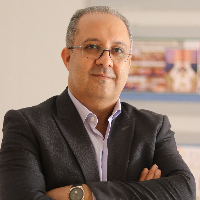Identifying Challenges and Opportunities for the Integration of Bionic Architecture with Traditional Vernacular Practices (A Case Study of Bam City)
Problem statement:
The rapid transformations in the architectural landscape of Bam City following the catastrophic earthquake of 2003 have created a profound gap between modern construction methods and the city’s rich cultural and climatic heritage. Traditional architectural elements, developed over centuries in harmony with the hot and arid climate, have gradually been replaced by modern designs that neglect environmental and cultural values. This study seeks to answer the critical question: What are the opportunities and challenges of integrating bionic architecture with indigenous knowledge in Bam’s historical fabric, and how can ecological design principles be employed to create a sustainable and culturally harmonious environment in this unique climate?
To address this issue, a mixed-methods approach was adopted. Field studies and photographic documentation of historical structures were conducted to meticulously analyze the characteristics of vernacular architecture. Consultations with biologists provided insights into the ecological adaptations of native species. Interviews with ten architects and thirteen residents revealed traditional knowledge and their perceptions of nature-inspired design. Image preprocessing using OpenCV software facilitated geometric and textural analysis, which was subsequently reviewed by three architectural experts. Qualitative data from interviews were coded using Atlas.ti software, extracting themes related to the interplay of bionic principles and indigenous knowledge.
The study highlights the compatibility between Bam’s vernacular architecture and bionic strategies, including passive cooling systems and optimal material efficiency. However, challenges such as the adaptability of modern materials, economic constraints, and earthquake vulnerability were identified as barriers to integration. Addressing these challenges requires the development of hybrid solutions, combining modern and traditional materials, participatory urban planning, and nature-based approaches tailored to Bam’s specific socio-economic and environmental conditions.
-
INTRODUCING BRITISH COLONIAL ARCHITECTURAL BUILDINGS IN SISTAN
Maryam Fathi, Abolfazl Heidari *,
Journal of Sistan and Baluchistan Studies, Dec 2024 -
A Comparative Study of the Physical Structure of Chogha Zanbil Ziggurat in Iran with the Stepped Pyramid of Djoser in Egypt
Zahra Karbasian, Abolfazl Heidari, *, Zohreh Oveisi Keikha
Journal of Interdisciplinary Studies in Iranian Architecture,



